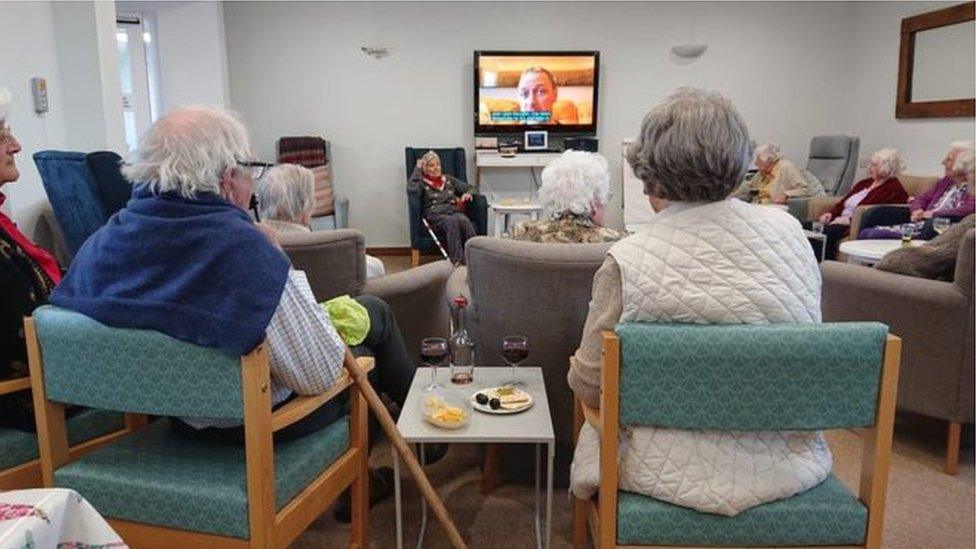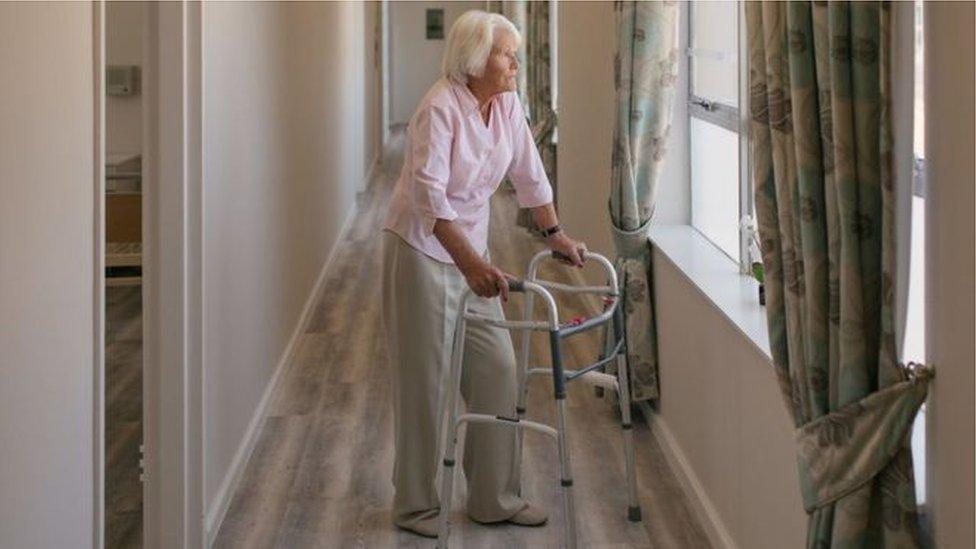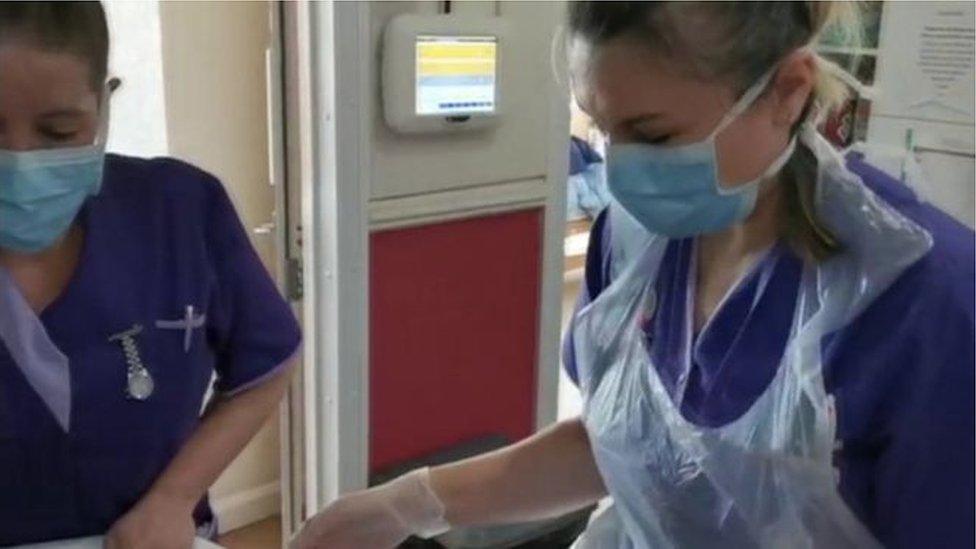Are Scotland's care homes able to care?
- Published

Private care homes are getting some of the heat for the spread of coronavirus and high numbers of residents' deaths.
That has led to claims they should be in public hands, and that they are raking off excess profits.
There are examples of that. But the wider problem seems to have more to do with under-funding than profiteering.
Indeed, private care homes in Britain are struggling with unsustainably low levels of government-paid fees.
The shortfall is reckoned to be around £1bn, and much of that is made up with excess fees, paid by older and vulnerable residents, required to draw on often modest savings.
That was the finding of the Competition and Markets Authority, when it took a close look at the private care home sector in 2017.
Fees 'shortfall'
It was trying to find out if the market operated in the interests of those who have to use the homes.
The answer: not sufficiently. At the point of choosing a home, people are often in a weak position to choose or negotiate.
But the other main finding was that local government is failing to pay sufficient fees to make the sector sustainable. It needs more to pay for repairs and maintenance, and to attract new investors, when demographic change points to the need for a big rise in capacity.
Those that are building new care homes are doing so in affluent areas, where they can attract wealthier "self-funders", the CMA found.
In Scotland, a self-funder is someone who has to pay their way, after getting the standard government grants for nursing and personal care - if they're assessed as needing them.
With care home fees for private individuals costing more than £900 per week on average, that's £200 more than the nationally negotiated set rate for council-funded residents.

In numbers: Scotland's care homes for older people

Residential care home beds (2017): 32,799 in total
Long-stay: 31,223
Private sector: 26,053
Council/NHS: 3606
Voluntary: 3032
Long stay residents with dementia: 62%
Average length of residency: 1.5 years.
Discharges from care homes:
85% due to the resident dying
7% move care home
5% leave for hospital
1% go back to their own homes.
Local authority rates for 2020-21:
Nursing home: £740 per week
Residential home: £635
*Sources: ISD census: Scottish Care: Competition and Markets Authority

The Convention of Scottish Local Authorities (Cosla) tells care homes what it thinks is reasonable to pay. It assumes the minimum level of staffing, and a minimum £9.30 per hour for care assistants, though the maximum isn't much more.
Scottish Care, which represents most private care homes, says the National Care Contract assumes a lower level of nurse pay than equivalent work in the NHS. There's heating, and less than £6 a day for food. A 4% margin is allowed for profit.
For a nursing home resident, that comes to a weekly £740 this year. Care Scotland says the true price should be £950 to £1000. But it's not in a strong negotiating position.
In England, each council negotiates its own rates, leaving a much less clear picture. The rates for private individuals in England can be up to a third higher than the council rate.
Union concerns
An alternative analysis of the private care home sector, by the GMB trade union, found that care homes can be far too profitable, and that some people have become very rich.
Ownership is hard to pin down, through complex corporate vehicles, these "private equity" owners are hard to determine, sometimes because their profits go to tax havens.
That union research suggests the bumper profits are made from property rather than running the service. But the GMB argues that it has a direct effect on the low pay and poor employment conditions of care home workers.
The private equity ownership model accounts for fewer than a fifth of Scottish care homes.
- Published13 June 2020
